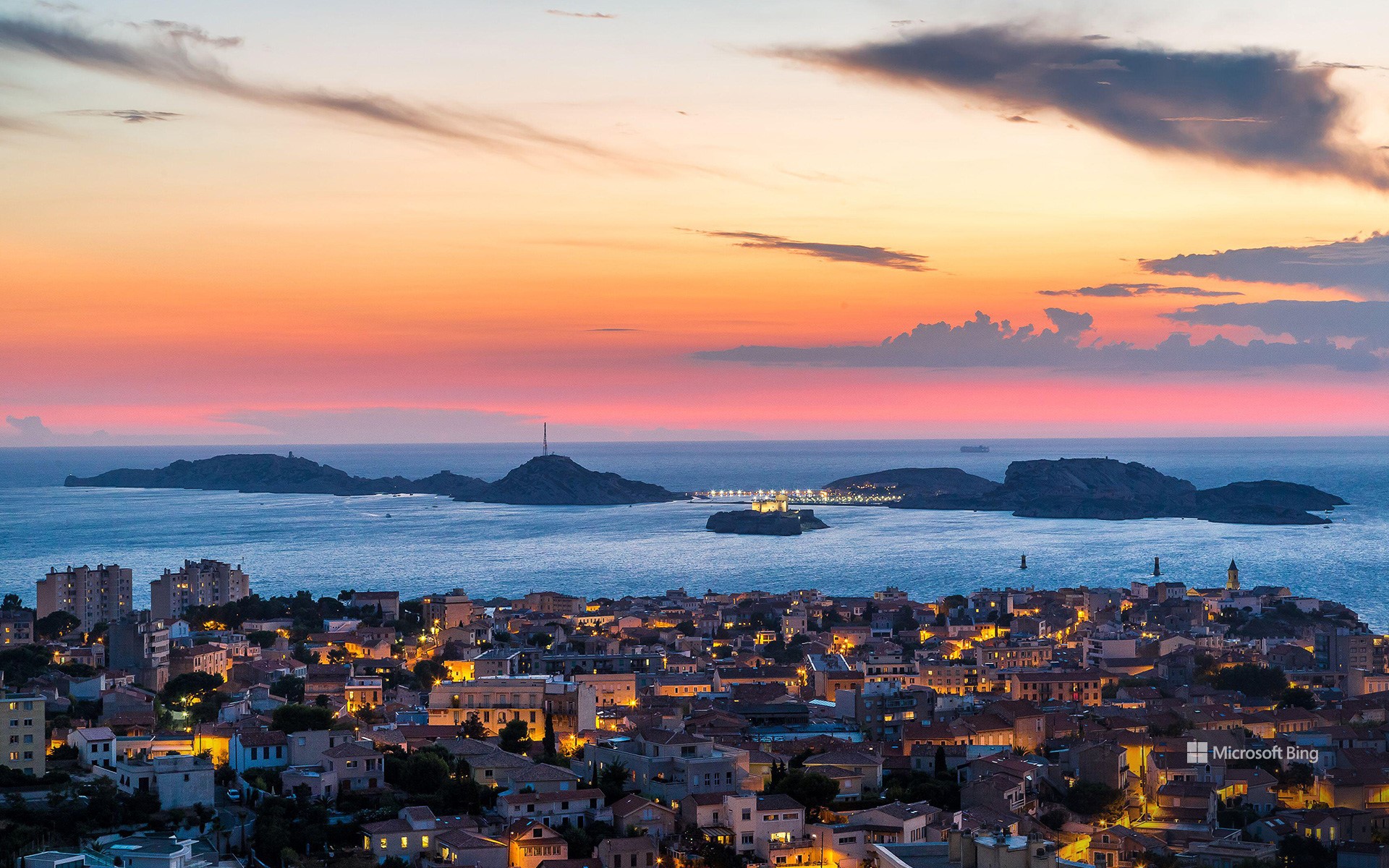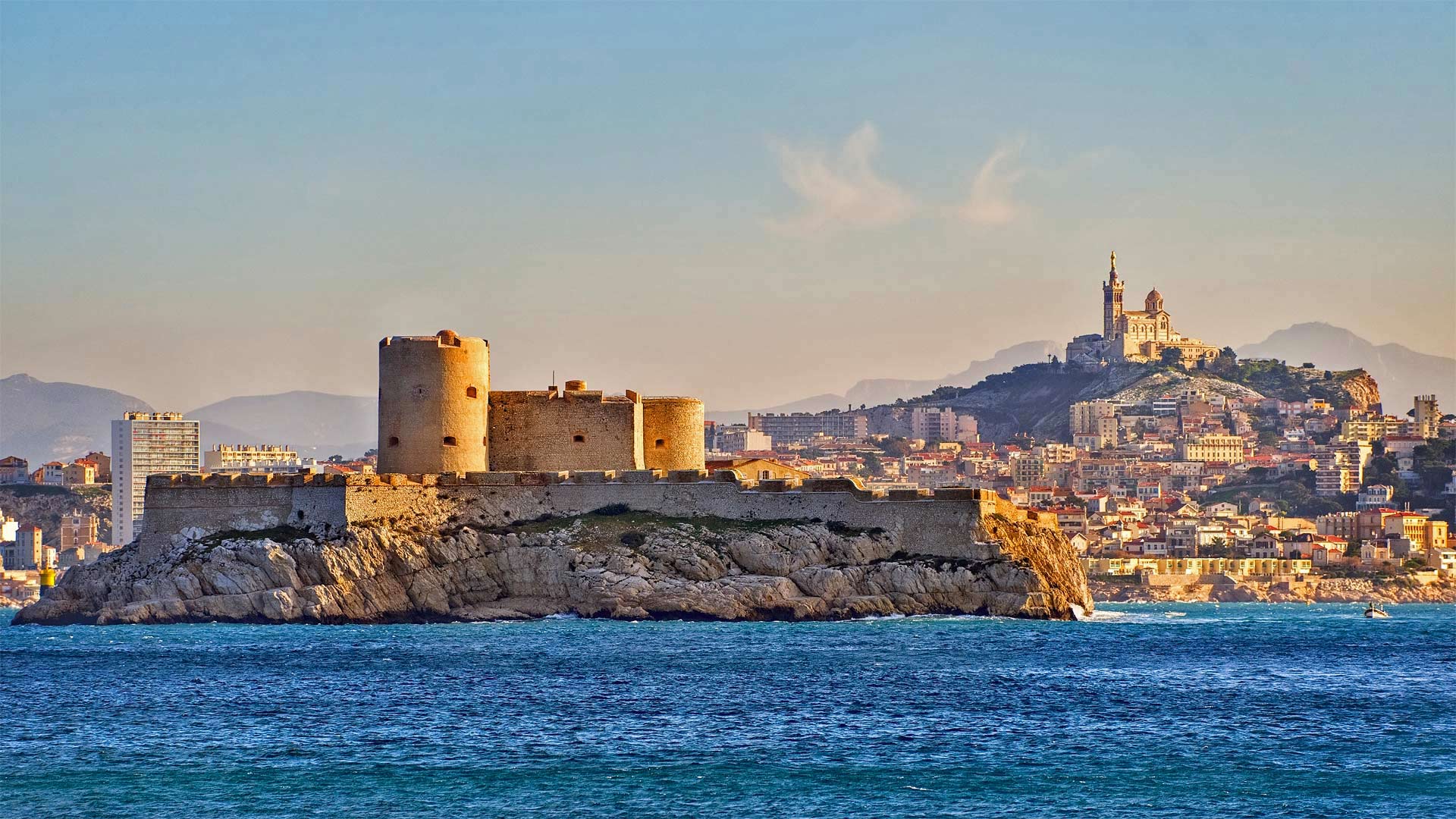伊夫堡,马赛,法国 View of Château d'If in the port of Marseille, France (© Sergii Figurnyi/Alamy)

伊夫堡,马赛,法国 View of Château d'If in the port of Marseille, France (© Sergii Figurnyi/Alamy)
海港景色 (S)port perspective
马赛迎来奥运火炬
准备好在法国马赛享受阳光和奥林匹克精神吧。马赛是一座充满活力的海滨城市,以其丰富的海洋遗产和文化多样性而闻名,是通往地中海的门户。今天,奥运火炬的到来点燃了这里期待奥运的热潮。作为连接现代奥运会与古希腊文化遗产的一个象征,奥运火炬于4月16日在希腊奥林匹亚点燃,奥运圣火就此开启环绕法国的旅程,直至抵达巴黎奥运会。夏季奥运会将于7月26日开幕,而马赛正在为举办奥运会帆船比赛做准备,这座城市充满活力,将传统与创新融为一体。
在今天的图片中,我们可以从远处看到伊夫城堡,它作为大仲马作品《基督山伯爵》中的一个重要场景而闻名于世。这座建于16世纪的城堡屹立在蔚蓝的海水中,低声诉说着它作为文艺复兴时期堡垒、监狱以及文学缪斯女神的过去。
Marseille welcomes the Olympic torch
Get ready to soak up the sun and Olympic spirit in Marseille, France. A coastal city rich in maritime heritage and cultural diversity, today it welcomes the arrival of the Olympic torch on French soil. The fire was lit in Olympia, Greece, on April 16. Symbolizing the link between the modern games and their ancient Greek heritage, the flame embarks on its journey around host nation France, ahead of the Paris Olympics. The Summer Olympics will begin on July 26. As Marseille prepares to host the Olympic sailing competition, the city pulsates with energy, blending tradition with innovation.
The Château d'If, seen from afar in today's image, featured in Alexandre Dumas' famous novel 'The Count of Monte Cristo.' Standing steadfast amidst the azure waters, the château, built in the 16th century, whispers tales of its past as a Renaissance fortress, prison, and literary muse.
从昂沃峡湾眺望里欧岛,法国马赛 (© Jason Langley/AWL Images/Offset by Shutterstock)
伊夫城堡,法国马赛 Château d'If in Marseille, France (© Boris Stroujko/Shutterstock)

伊夫城堡,法国马赛 Château d'If in Marseille, France (© Boris Stroujko/Shutterstock)
A prison fit for a count
Château d'If, off the coast of Marseille, France, was built beginning in 1524 as a fortress by King Francis I because of the tiny island's steep cliffs and strategic location. While the 'château' never gained notoriety defending the ancient port (since it was never attacked), it did become famous as a prison. Surrounded by treacherous currents—like Alcatraz in San Francisco—it gained a reputation starting in the late 16th century as a dumping ground for powerful political and religious prisoners. As far as official records go, none of the prisoners condemned there ever escaped.
However, there is one famous tale of an escape from the château by one Edmond Dantes, the titular hero of the 1844 Alexander Dumas novel 'The Count of Monte Cristo.' And though he is a work of fiction, you can visit Edmond Dantes' cell on the lower level of the prison. The nearly perfectly preserved castle is just a short ferry ride from the docks of the old port of Marseille.
